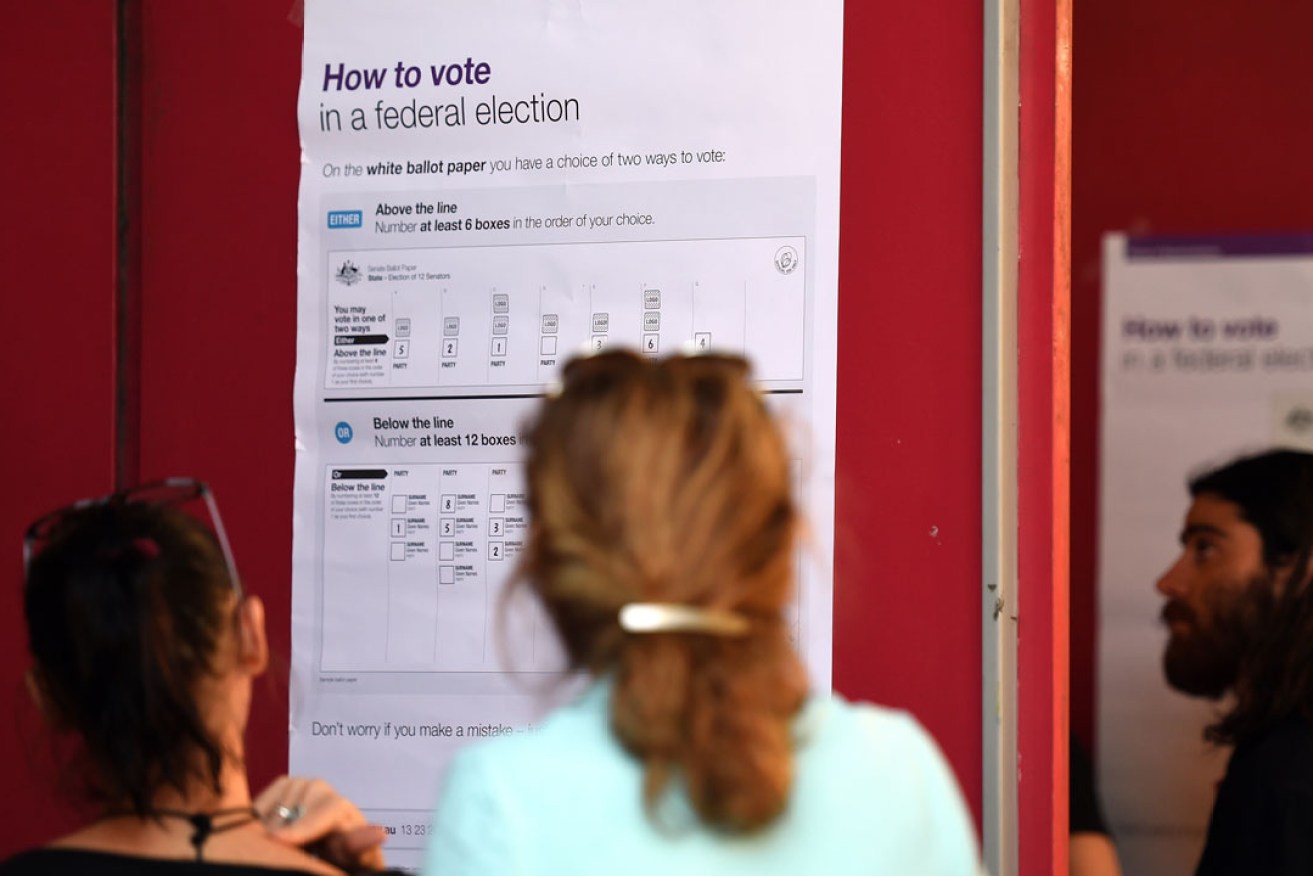Times are changing – and so should our system of government
Poll results from both the federal election and recent state elections show Australia’s party system is disintegrating and it’s time to consider new forms of government, writes electoral reform proponent Darian Hiles.

The major parties' efforts to bypass the minors in the recent federal election backfired. Photo: AAP
Apologies to Banjo Paterson, but there’s movement at the station. Labor and the Coalition should have seen the shift to the minor parties as far back as 2010 in the South Australian state elections.
In that year, there were more than 30,000 votes below the line for the Upper House and in the following 2014 election more than 40,000, which provides a good statistical sample of the public’s true view of the candidates. It shows that the independents and minor parties were in far stronger positions than indicated by the results from the party boxes alone, and there’s no indication that the Lower House results would have been any different.
Those who simply vote for one major party rarely have any idea of how their votes flow down to secondary and relatively unknown candidates, but these flows potentially multiply the counts for them hundreds of times, far eclipsing any minor-party preference deals.
One infamous case was Bernard Finnigan, who was placed on the ticket by the Labor Party in the state election in 2010. He received less than half of 1 per cent of the personal votes below the line but still gained a seat through the massive flow-downs when the first candidate on the ticket exceeded the party quota. Since then he’s been replaced by another who hasn’t faced the voters, was chosen by the party and then immediately touted as a future premier! The system has allowed the voters to be completely blindsided.
In that 2010 election, 11 candidates were elected in the SA Legislative Council: eight from the Labor/Liberal parties and three from Greens, Family First and Dignity for Disability. But the website of the Electoral Council of SA shows that six of the major-party candidates had an average of less than half of 1 per cent of the personal votes and all were massively topped up to the quota with flow-downs that multiplied their counts more than 620 times.
In contrast, the top six minor-party candidates averaged many times those personal votes but were excluded because they didn’t have the magic party above-the-line top-ups.
Similarly in 2014, the vote counts of five successful major party candidates showed personal averages of only about 0.6 per cent of the total, while the five highest minor party candidates averaged more than double that but were excluded because they didn’t have the top-ups of the party boxes to multiply their personal vote counts into the stratosphere.
If simple optional preferential voting below the line had been in place then without the party boxes, this trend would have given us six fewer Liberals in the Upper House today, four less Labor, 10 more minors in their places and a genuinely independent house of review not controlled by a major party.
No wonder the major parties want to get rid of the minors! The figures show that the majors received only a quarter of the personal votes but gained nearly three-quarters (eight out of 11) of the Upper House seats, with the additional benefit of removing any chance of independent reviews of their bills.
Obviously the majors have no interest in changing a system that’s immensely favourable to them, as an Opposition-controlled Upper House that can reject the bills of the other party out of hand or a government-controlled one that automatically passes them, each time without debate, is very convenient for both sides in an adversarial system.
The Senate at the federal level is the same, yet the two major parties introduced even more legislation to bypass the minors for the election on July 2. Their adjustments backfired in both houses. The public was too smart for them but unfortunately there was no viable option for an alternative.
One suggestion to resolve the problem is a parliament of national unity: a broad coalition government consisting of all parties that have been successful in the election. The Prime Minister, who may be the leader of the major party or selected by Parliament, then heads a Cabinet which is chosen by the Prime Minister or by the majority vote of Parliament or the public. This has occurred in several countries, including the UK as far back as the 1800s, but this option hasn’t been presented to Australian voters.
Now, as has happened since federation, we continue to waste half the skills in Parliament – all the successful candidates that were chosen by the public but are now sitting outside of Government. With a close-to-tied result, half the public is disenfranchised and gridlock continues to be a permanent threat, as it has been historically with our conflicted system.
Another election would not restore confidence in the major parties but would probably do the reverse and increase the minor party trend.
The only alternative is for our parliamentarians to agree to work together, particularly in preparation for the next federal election in 2019, which is likely to further dissolver the power of the major parties and force them to develop a system of working together for the benefit of the nation.
If the major parties had looked at the results in SA in 2010 and 2014, they would have seen that our party system is slowly disintegrating. It’s time for a major review and the republic debate is the ideal, in fact necessary, forum to open the political discussion in Australia to new forms of government.
Times are changing. We can either tag along or lead.
Darian Hiles is a committee member of the Electoral Reform Society of SA.




